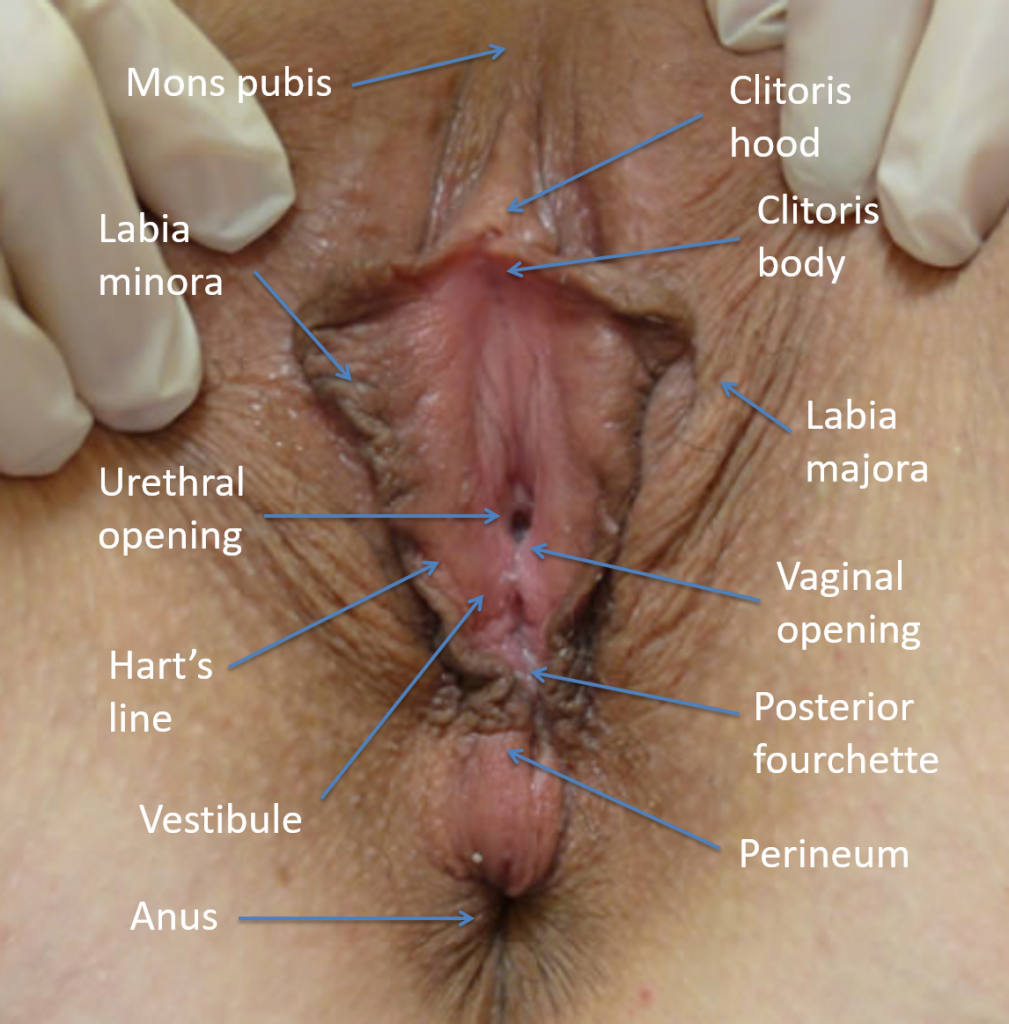Structures of the vulva
What the vulva includes

The structures of the vulva
Working from the front of the body to the back, and from the outside inwards, the vulva includes these structures:
- Mons pubis
Fatty pad, covered by hair, which sits over the pubic bone on the front of the body between the legs.
- Labia
Outer folds of skin (meaning ‘lips’). These contain the labia majora and the labia minora.
- Labia majora
The outer lips which often hide the inner vulva. These contain fat and are covered with hair.
- Labia minora
The inner lips. These do not contain fat and are hairless.
- Clitoris
Located beneath the meeting point of the inner labia (labia minora) at the top of the vulva, just below the mons pubis. The body, or glans, of the clitoris is usually the size of a pea and is covered by the labial skin known as the hood of the clitoris.
- Urethral opening
The external opening of the urethra, a tube which connects the bladder to the vulva, and is used to pass urine.
- Hart’s line
This is on the inside of the inner lips and is the line marking the change from the outer vulval skin to the smoother skin of the vestibule.
- Vestibule
The inner, circular area between the labia minora and the opening to the vagina.
- Vaginal opening
The point at which the vagina opens out into the vulva.
- Posterior fourchette
The thin fold of skin formed at the bottom meeting point of the labia minora, between the vaginal opening and the perineum.
- Perineum
The bridge of skin and muscle which separates the fourchette from the anus.
- Anus
The external opening of the bowel. The anus is often included when discussing the vulva as many skin conditions of the vulva can involve this area.
Colour of the skin
The skin colour in a normal vulva will vary depending on the skin colour of the rest of the body. Sometimes after pregnancy the skin can be pigmented. The vestibule area can have a ‘red’ appearance as the skin here is thinner than the outer labial skin.
Lumps and bumps
The labia may have small folds of skin (sometimes very small folds, known as papillae). These are variations of normal and are harmless.
What is normal?
Everyone is different and the labia can be large or small, short or long, and even different sizes. The vulva can change throughout a woman’s life from infancy, through puberty and into old age.
Sexual response
The vulva (especially the labia and clitoris) can swell a little when a woman gets sexually aroused. The skin can produce secretions, which are a natural lubricant. The clitoris, like the male penis, becomes erect during sexual stimulation.
How to perform vulval self-examination (for patients)
There are full details of how to perform self-examination on our How to perform vulval self-examination page.
How to carry out a vulval examination (for health professionals)
Following patient counselling and discussion ask the patient to put her ankles together and relax her knees. Use a blanket to cover her lower abdomen. Use a good light and get close!
Examine in the following order:
- Mons pubis
- Labia majora (inner and outer folds)
- Labia minora (inner and outer folds)
- Clitoris hood and body
- Vestibule
- Perineum
- Anal area
You are looking for lumps, ulcers, fissures (paper cuts), indurated (thickened) skin, lichenification (leathery skin thickening), erosion (loss of epithelium), changes in pigmentation, nodules, areas of pain and tenderness.